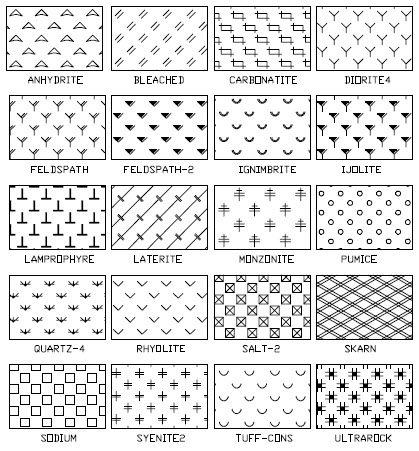Issue:
This article describes how to install custom hatch patterns in AutoCAD using PAT files.Coronado Manufactured Stone Natural Stone Products Willamette Graystone Resources Grouting Options Seamless Stone Textures Hatch Patterns Installation Guides Product Specification Sheets Technical Drawings Technical Documents Coronado Stone Literature Care & Maintenance. AutoCAD Download and install new hatch patterns (PAT files) Tutorial. AutoCAD Download and install new hatch patterns (PAT files) Tutorial. Hatch Pattern & Custom Hatch Pattern In AUTOCAD.
Solution:
Windows OS
- Windows Vista, 7, 8, and 10. C:Users<USER>AppDataRoamingAutodeskAutoCAD 20xxRxx.x<LANGUAGE>Support
- Windows XP. C:Documents and Settings<USER>Application DataAutodeskAutoCAD 20xxRxx.x<LANGUAGE>Support
- For AutoCAD 2009 and earlier, the default location is: C:Program FilesAutodeskAutoCAD 20xxSupport
- The AppData and Application Data folders in the above paths are hidden folders (see How to turn on hidden files and folders on Windows).
- The default path is specified in the Support File Search Path listed under the Files tab in Options. It is usually the first one shown, pointing to the current user folder.
- If there is no longer a .pat file of an existing hatch used in a drawing, use the express tool SUPERHATCH to try and bring in the custom hatch pattern.
Mac OS
- On any drawing, type HATCH and press Enter.
- Click the pull-down in the Hatch visor for Patterns and click Open Library.
- Click the drop-down arrow and select Add Patterns.
- Browse to the location of the custom .pat files, select them, and click Open.
- Custom hatch patterns files will automatically be copied to the following locations:

- AutoCAD for Mac 2016 and later. ~Home/Library/Application Support/Autodesk/AutoCAD 201x/Rxx.x/roaming/@<LANGUAGE>@/Support/Hatch Patterns
- AutoCAD for Mac 2011 to 2015. ~Home/Library/Application Support/Autodesk/roaming/AutoCAD 201x/Rxx.x/<LANGUAGE>/Support
Note: Manually copying the .pat files into the specified location will also work.
See Also:
Products:
AutoCAD for Mac; AutoCAD LT for Mac; AutoCAD Products;Choose from:
- Predefined hatch patterns. Choose from over 70 ANSI, ISO, and other industry-standard hatch patterns, or add hatch pattern libraries supplied by other companies.
- User-defined hatch patterns. Define your own hatch patterns based on the current linetype, with spacing, angle, color, and other properties you specify.
- Custom hatch patterns. Hatch patterns are defined in the acad.pat and acadiso.pat (acadlt.pat and acadltiso.pat for AutoCAD LT) files. You can add custom hatch pattern definitions to these files.
- Solid fill. Fill an area with a solid color.
- Gradient fill. Fill an enclosed area with a color gradient. A gradient fill can be displayed as a tint (a color mixed with white), a shade (a color mixed with black), or a smooth transition between two colors.

Gradients that mimic colors displayed on a cylinder, a sphere, or other shapes are available.
Hatch Boundaries and Associativity
In the following illustration, the concrete hatches are bounded, while the earth hatches are unbounded.
By default, bounded hatches are associative, which means that the hatch object is associated with the hatch boundary objects: changes to the boundary objects are automatically applied to the hatch.
Autocad Free Hatch Library
Nonassociative hatches are not updated when their original boundary is changed.
Hatch associativity is turned on by default and is controlled by the HPASSOC system variable. You can change hatch associativity using the Associate button on the Options palette, the Properties palette, or the Hatch Edit dialog box.